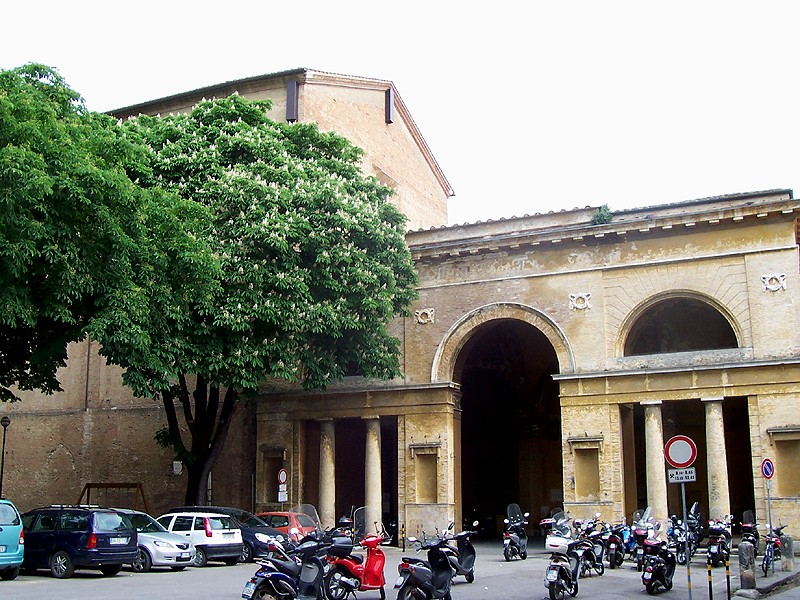Collegio Tolomei, Siena on:
[Wikipedia]
[Google]
[Amazon]
The Collegio Tolomei is a high school adjacent to Sant'Agostino and Piazza dell'Erbe in 
Archives of the Comune of Siena
. The portico and entrance staircase were designed by Agostino Fantastici in the 19th century.
Siena
Siena ( , ; traditionally spelled Sienna in English; ) is a city in Tuscany, in central Italy, and the capital of the province of Siena. It is the twelfth most populated city in the region by number of inhabitants, with a population of 52,991 ...
, region of Tuscany
Tuscany ( ; ) is a Regions of Italy, region in central Italy with an area of about and a population of 3,660,834 inhabitants as of 2025. The capital city is Florence.
Tuscany is known for its landscapes, history, artistic legacy, and its in ...
, Italy.
History
It was founded in 1676 with an endowment by Celso Tolomei, of a prominent and ancient Sienese family. The school was then run as aseminary
A seminary, school of theology, theological college, or divinity school is an educational institution for educating students (sometimes called seminarians) in scripture and theology, generally to prepare them for ordination to serve as cle ...
by the Jesuits
The Society of Jesus (; abbreviation: S.J. or SJ), also known as the Jesuit Order or the Jesuits ( ; ), is a religious order (Catholic), religious order of clerics regular of pontifical right for men in the Catholic Church headquartered in Rom ...
and targeted youth from the noble families in Siena. With the 1773 suppression of the Jesuit order, the institution passed on to the Scolopi order. After the convulsive period of French occupation, including some moves within the town, in 1820 the school reverted to the Scolopi, who ran the school till 1876. The school was in 1882 transformed into a Convitto Nazionale (National elementary-middle school) under the lay leadership. In 1886–1888, it became a military college under control of the Ministry of War. In 1893, it was returned to the jurisdiction of the Ministry of Public Education under the name of Convitto Nazionale, which it still conserves.. The portico and entrance staircase were designed by Agostino Fantastici in the 19th century.
References
{{Coord missing, Italy Buildings and structures in Siena Neoclassical architecture in Siena